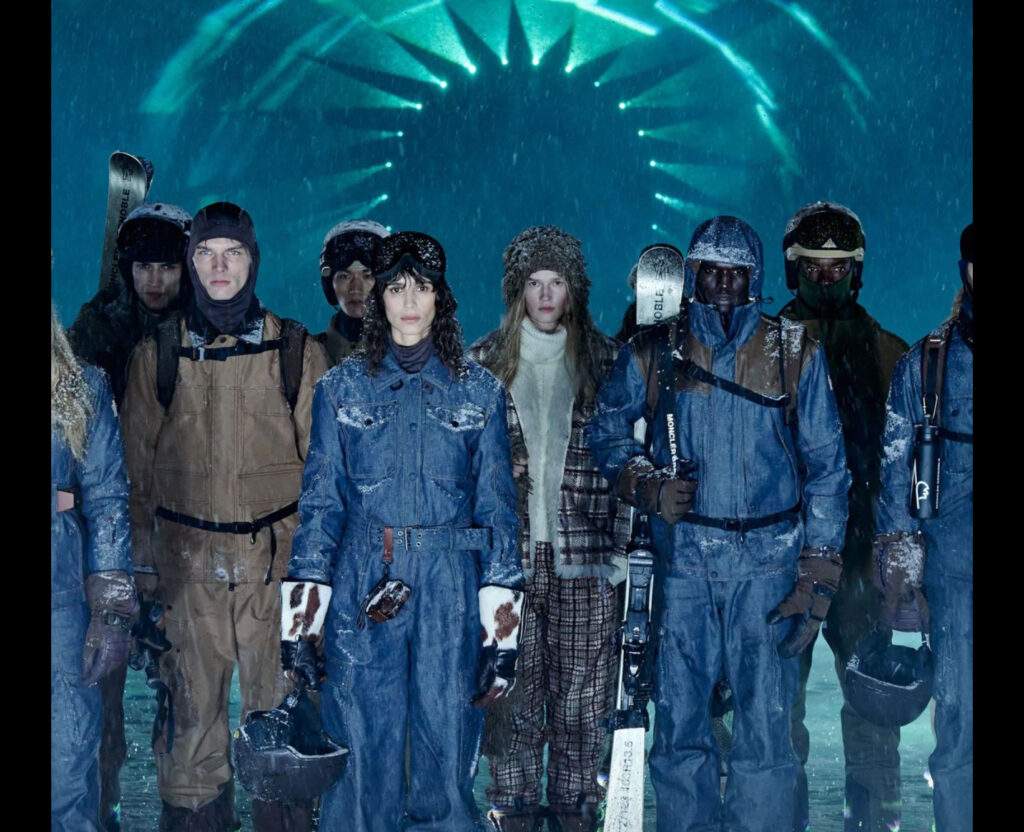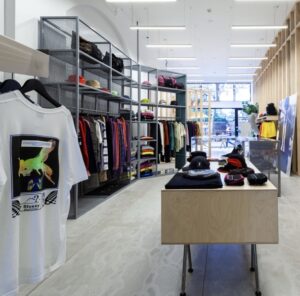In an economic environment riddled with volatility, the Moncler Group has delivered a performance that may seem modest on the surface—just a 1% increase in revenue year-over-year—but beneath that figure lies a compelling story of brand resilience, operational discipline, and luxury sector strategy.
The Italian outerwear giant, known globally for its high-end puffers and alpine-chic aesthetic, posted consolidated revenues of €829 million for the first quarter of 2025, surpassing cautious analyst expectations and triggering a minor yet confident uptick in after-hours trading.
This growth, while restrained, reflects Moncler’s strategic execution during a time when many luxury brands are either consolidating or recalibrating due to cooling demand in China, rising interest rates globally, and increased political instability across key consumer markets.
Moncler Group Chairman and CEO Remo Ruffini emphasized the brand’s long-term commitment and strategic focus in a statement accompanying the results:
“The beginning of the year was marked by ongoing macroeconomic and geopolitical complexities, which we continue to navigate with strong operational discipline and sharp focus on our brand-first strategy.”
REVENUE SNAPSHOT: FLAT IS THE NEW STRONG
Let’s break down that 1% year-over-year growth. On paper, it may not dazzle. However, context matters—and Moncler’s Q1 2024 was an exceptionally strong quarter, bolstered by post-pandemic luxury spending booms and robust DTC (direct-to-consumer) activity. Holding steady or growing slightly against such a high comparative base is, in today’s climate, a signal of fundamental strength.
The group includes two major fashion brands: Moncler itself and Stone Island, the Italian sportswear brand it acquired in 2021. Ruffini noted that both brands achieved “solid growth in the DTC channel” in the first quarter, underscoring the effectiveness of their retail-first philosophy, which favors immersive flagship stores, brand-controlled digital channels, and curated seasonal campaigns over heavy wholesale dependency.
Moncler’s revenue, taken alone, increased low-single-digits, while Stone Island showed signs of operational recovery after a slower-than-expected transition under new ownership.
ANALYST REACTIONS: QUIET OPTIMISM
Market reaction was cautious but positive. Moncler shares rose slightly in after-hours trading following the earnings call, indicating investor approval not for flashy numbers, but for a steady hand steering through headwinds. Analysts have praised Moncler’s “brand-first” mantra, citing its consistency and discipline in focusing on desirability, full-price selling, and experience-driven retail.
Some investment firms revised their Q2 projections upward by a small margin following the earnings release, not out of exuberance but out of trust in Ruffini’s ability to pilot the company through market tremors with maturity.
“In luxury, holding flat on a tough comparative base is a win,” wrote an HSBC analyst. “What we see here is evidence that Moncler has joined the ranks of category-defining brands like Hermès—underpinned by scarcity, identity, and resilience.”
THE DTC STRATEGY: SELL LESS, SELL BETTER
At the heart of Moncler’s Q1 2025 performance is a clear commitment to direct-to-consumer excellence. More than ever, Moncler’s stores are not simply places to buy coats—they are temples to the brand’s mythology. From immersive installations in Seoul to experiential activations in Aspen, Moncler is not only controlling its narrative but deepening its emotional relevance.
In recent years, the company has rapidly expanded its Moncler Genius line—seasonal capsules and collaborations designed to create brand heat. In Q1 2025, key Genius launches with brands like Sacai and Pharrell Williams’ Humanrace were rolled out via highly publicized, city-specific events, driving social media engagement and store traffic.
Stone Island has also begun adapting to this strategy, with limited drops and archival reissues appearing in exclusive Stone Island locations, signaling a shift away from its former wholesale-centric model.
This dual-brand strategy is underpinned by Ruffini’s belief that brand integrity drives economic sustainability, not the other way around.
CHINA AND THE GLOBAL LUXURY SLOWDOWN
No Q1 report in 2025 is complete without discussion of China, and Moncler is no exception. While other brands have suffered from declining Chinese consumer sentiment and weaker travel retail numbers, Moncler managed to hold its own in Asia-Pacific markets, thanks in part to localized strategies, pop-up campaigns, and a growing appeal among younger urban buyers.
Still, China remains a question mark. Analysts estimate that Moncler’s Asia-Pacific sales were down low-single-digits year-over-year but fared better than peers like Gucci and Burberry, both of whom have noted double-digit declines in the region.
“We didn’t expect acceleration from China,” said Ruffini in the post-earnings Q&A. “But our focus on community-based events and selective store openings continues to build loyalty in that region. We play the long game.”
The U.S. market showed modest gains, especially in cold-weather cities like New York and Chicago, where seasonal demand for outerwear and success in experiential pop-ups contributed to growth. Meanwhile, European performance remained stable, albeit cautious due to economic softness in Germany and France.
STONE ISLAND: FINDING ITS POST-ACQUISITION GROOVE
When Moncler acquired Stone Island in 2021, it promised to elevate the brand’s global presence without diluting its identity. While Stone Island’s transition into a DTC-driven, luxury-positioned player has not been without challenges, Q1 2025 suggests signs of traction.
Stone Island’s revenues were slightly up, bolstered by new flagship store openings in Tokyo and Berlin, the launch of its Archivio Collection, and renewed cultural interest in its technical garment innovation. The brand also benefited from continued affinity in underground and subcultural communities, from UK grime to Milanese streetwear circles.
In 2025, Stone Island’s evolution remains delicate—retaining its authenticity while aligning more closely with Moncler’s luxury branding ethos.
SUSTAINABILITY AND SUPPLY CHAIN IN FOCUS
Moncler has not shied away from addressing the elephant in the room—sustainability and supply chain resilience. In Q1 2025, the company continued to make incremental progress on its Born to Protect sustainability platform, which includes commitments to carbon neutrality, traceability of down materials, and minimizing chemical use in dyeing processes.
Ruffini noted that these initiatives were not “just for CSR reports” but increasingly tied to consumer preference and operational efficiency. As part of this, Moncler has deepened partnerships with Italian artisans and textile producers to mitigate offshore risk and ensure product quality.
The company also introduced new recycled nylon-based materials in several Spring 2025 capsule pieces under both Moncler and Stone Island, receiving positive feedback from buyers and critics alike.
OUTLOOK FOR Q2 AND BEYOND
While Moncler has not issued formal guidance for the full fiscal year, executives remain confident in their medium-to-long-term trajectory. The group expects high-single-digit growth in its DTC channel to continue across both brands, driven by Spring/Summer launches, collaborative activations, and further digital optimization.
However, macroeconomic risks persist. The strength of the U.S. dollar, potential tariff shifts in Europe, and ongoing instability in the Middle East and Eastern Europe could affect logistics and consumer sentiment.
Still, Ruffini reiterated a philosophical commitment to resilience over velocity.
“In times of growing volatility and unpredictability, we remain even more committed to executing our clear long-term vision for both Moncler and Stone Island.”
Impression
For a company whose branding draws so heavily from the Alps, Moncler’s Q1 2025 result is emblematic of a slow, steady ascent rather than a flashy summit finish. In the context of a shaky luxury retail landscape, that’s no small feat.
Through measured expansion, brand storytelling, and a controlled retail ecosystem, Moncler has crafted a template for weathering uncertainty. Even as consumer behaviors shift and global challenges mount, the Italian group’s Q1 performance shows that disciplined execution, cultural clarity, and emotional capital still move markets.
No comments yet.








